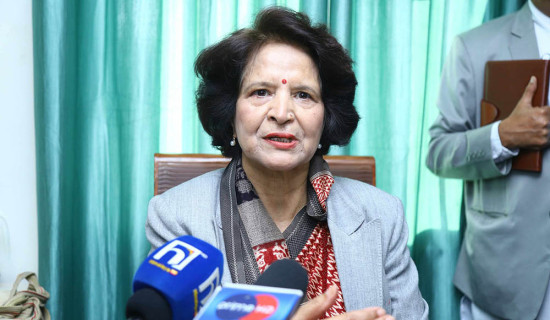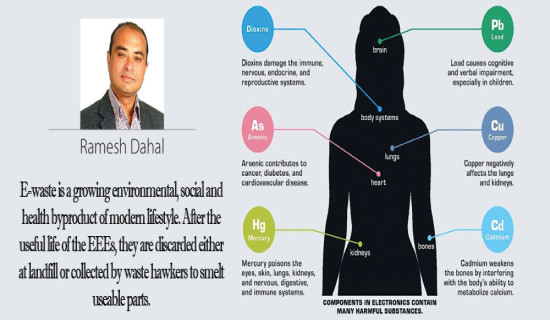- Friday, 26 December 2025
Air Quality Standards
Worsening air quality in the Kathmandu Valley remains in the news for much of the year. However during winter, the air pollution is at its peak, putting the health of its inhabitants, particularly, the elderly, newborns, expectant and new mothers, and those with underlying health conditions at grave risk. Thousands are thought to die prematurely every year because of toxic air, despite the country's constitution guaranteeing individual citizens the right to health. Yet, no concrete steps seem to have been taken to improve the air quality.
We have time and again reported that waste burning is turning the air quality from bad to worse, but still we routinely come across wastes being burnt in the open, a practice criminalised by the Kathmandu Metropolitan City (KMC) years ago. But why is the concerned authority seems so unwilling to persecute those found burning waste illegally? What is unequivocally clear is that without the KMC taking bold measures, our effort to make a dent on air pollution isn't going far enough. As we set out to clean up our air, learning our lessons from how major global cities are cleaning up their air can be a good starting point.
The UK's capital London used to regularly suffer from thick smog. In 1956, the UK passed the Clean Air Act, resulting in substantial improvement in air quality in the following decades. It regulated both industrial and domestic smoke, imposing "smoke control areas" in towns and cities where only smokeless fuels could be burned. Besides, it offered subsidies to households to convert fossil fuel to cleaner one. Going a step further, the city in 2019 introduced an ultra-low emission zone, which charged drivers of more polluting vehicles, bringing down the toxic air by a third in the six months of the introduction of the measure.
Similarly, China's rapid industrialisation brought a huge rise in air pollution. Coal-burning power stations and a boom in car ownership from the 1980s onwards filled Beijing's air with hazardous chemicals. In 2014, a major study declared Beijing "uninhabitable for human beings" because of the pollution. But in the space of just four years, between 2013 and 2017, fine particle levels in Beijing dropped by 35 per cent, while levels in surrounding regions dropped by 25 per cent. The Chinese government imposed ultra-low emission standards, created an advanced air quality monitoring system, and built more public transport to make this happen.
We can take a leaf out of London and Beijing's book. Old vehicles that release a plume of emissions into the air as they navigate through city roads must be substituted with those with minimal emissions or electric vehicles (EVs), and so must be the case with every fossil fuel-powered vehicles. For this, the government should bring out new policy that incentivises and also eases the path towards the adoption of EVs. In addition, encouraging people to use public transport has shown to lower the personal ownership of vehicles. Needless to say, less number of vehicles on the road corresponds to the lower level of pollution.
Lastly, the most effective weapon is the political will to legislate and enforce the law. Without bringing those flouting the set standards and rewarding those complying with them, the effort to bring down air pollution is going to be ineffectual. The KMC must act tough and hold every rule breaker to account.




-square-thumb.jpg)


-square-thumb.jpg)









